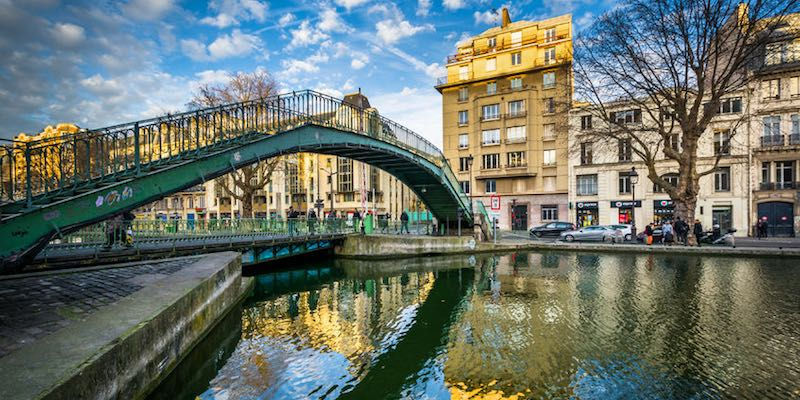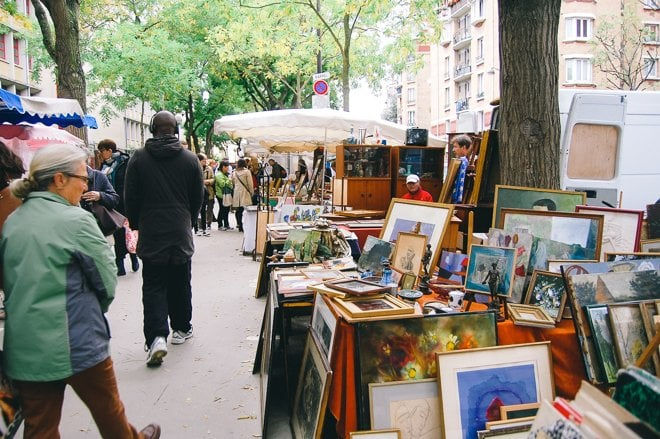Travel France Responsibly: 5 Ways to Explore Without Fueling Overtourism
- Alissa Bratz
- Aug 18
- 5 min read
5 Ways to Travel France Responsibly, without contributing to overtourism

Overtourism has been in the headlines a lot lately, from Venice to Rome to Iceland to Barcelona, and even in France there's been a bit of a vibe. While France hasn’t seen the same intensity of protests as some other countries, the concerns of local residents are real: crowded streets, rising prices, and the feeling that their hometowns are being turned into photo-op backdrops. It might seem strange for a travel agent like me to be acknowledging anti-tourism perspectives, but what if there were a way to travel better? How can we enjoy France while being respectful, traveling sustainably, and exploring with curiosity?
The concerns of local residents are real: crowded streets, rising prices, and the feeling that their hometowns are being turned into photo-op backdrops.
Here are five ways to travel France without fueling overtourism, with examples:

1. Visit Off-the-Beaten-Path Towns and Villages
Instead of flocking to Carcassonne, consider the medieval town of Pérouges near Lyon. Instead of the overcrowded Mont Saint-Michel, explore Le Mont-Dol or the nearby coastal villages of Brittany for a quieter historic experience. These smaller towns offer charm, history, and local culture without the crowds.

2. Travel Outside Peak Hours and Seasons
Iconic spots like the Eiffel Tower or the lavender fields of Provence get packed in July and August. Instead, visit iconic sites in the early mornings, late evenings, or during the shoulder seasons (April–June or September–October) - or better yet, during the off-season. Fewer crowds mean a more relaxed experience and more opportunities to connect with locals. It means the spots will feel more authentic and less "theme park-y."


3. Choose Alternative Attractions Over Popular Sites
If everyone heads to the Louvre, consider nearby but less crowded museums like the Musée Jacquemart-André or the Musée Marmottan Monet. In Paris, instead of the Champs-Élysées, stroll along the Canal Saint-Martin for cafés, street art, and a more authentic Parisian vibe.

4. Slow Down and Prioritize Depth Over Breadth
Rather than rushing to tick off 10 cities in 7 days, spend more time in fewer places. Take a cooking class in Lyon, explore vineyards in Cahors, or hike in the Cevennes.
Engaging with one place in depth fosters a more meaningful experience and supports local economies without overwhelming them.

5. Support Local and Sustainable Experiences
Opt for family-run inns, local markets, artisan workshops, and small tours instead of large-scale commercial operations. Not only does this help the local economy, but it ensures your travel experience is more authentic and environmentally conscious.
What if It’s My First Time in France and I Feel Like I Can’t Miss the Eiffel Tower?
We get it—some sites are iconic for a reason. First-timers will understandably want to see the Eiffel Tower, the Louvre, or Mont Saint-Michel. But you can visit these bucket-list spots responsibly:

Go off-peak: Early morning or evening visits drastically reduce crowds.
Choose one or two icons: Pick just one or two iconic sites that are most important to you, and fill the rest of your trip with depth-focused experiences.
Layer in offbeat experiences: Complement iconic sites with hidden gems, local neighborhoods, or unique regional experiences (see below for examples).
Instead of packing your itinerary with multiple “must-sees,” pick one or two and fill the rest of your trip with depth-focused experiences.
7-Day France Itinerary: Slow, Thoughtful, Off-the-Beaten-Path Travel (while still seeing the Eiffel Tower)
Days 1–3: Paris (Iconic Sites + Depth)
Day 1: Arrival & Neighborhood Immersion
Arrive in Paris and settle into your hotel or boutique guesthouse.
Explore Le Marais on foot: charming streets, small cafés, and independent shops.
Evening stroll along the Seine to see the city lights.
Day 2: Iconic Paris (Choose just a few)
Eiffel Tower: visit early morning to avoid crowds. Take time to take pictures at Trocadéro, and then picnic on the Champ de Mars for great tower views, rather than spending hours in line to climb up all the levels of the Eiffel Tower

view from the Tour Montparnasse
Tip: Want a view from up high above Paris without the crowds and long lines at the Eiffel Tower? Book a visit to the Tour Montparnasse rooftop observation deck! Time it for sunset and get a glass of champagne as you watch the Eiffel Tower light up!
Louvre (optional, focus on 1–2 highlights): instead of trying to see everything, pick a few sections or masterpieces that interest you most.
Tip: Want a museum experience without the crowds and long lines at the Louvre? Seek out one of Paris's many, many other art museums (well over 100). Think about what kind of art you love and let that be your guide. Check out some of my suggestions here, here, and here.
Afternoon: Explore Canal Saint-Martin or Parc des Buttes-Chaumont, away from tourist zones.
Dinner at a small local bistro.

Parc des Buttes Chaumont, in the 19th
Day 3: Hidden Gems & Local Experiences
Morning: Musée Jacquemart-André or Musée Marmottan Monet for a calm, art-focused morning.
Afternoon: Take a cooking class or walking food tour in a quiet neighborhood like Oberkampf or the 11th arrondissement. Or visit a flea market or thrift store instead of the Champs-Elysées for unique souvenir finds.
Evening: Watch a small theater performance or live music show in one of Paris's many small venues, off the tourist track.

Vanves flea market
Days 4–7: Loire Valley (Focus on Depth, Local Life)
Day 4: Travel to Loire Valley & Village Exploration
Take the train or drive to the Loire Valley.
Check into a small inn or countryside guesthouse.
Visit Château d’Azay-le-Rideau or Château de Montresor, avoiding the heavily visited castles.
Stroll through local villages, markets, and cafés.

Azay-le-Rideau, one of over 200 châteaux in the Loire - with so many to choose from, it's easy to find hidden gems and avoid the crowds.
Day 5: Vineyards & Slow Travel
Visit a small, family-run vineyard in Vouvray or Saumur. Participate in a tasting and learn about local winemaking traditions.
Take a bike ride along the Loire River, stopping in quiet villages like Cande-sur-Beuvron.
Evening: Dinner at a local auberge, savoring regional cuisine.

A vineyard in Saumur
Day 6: History & Nature Immersion
Explore Troglodyte caves in Saumur or the gardens at Château du Rivau, focusing on local history and landscapes.
Afternoon: Leisurely walk or boat ride along the Loire to soak in the natural scenery.
Evening: Small-town cultural event or quiet wine bar.

Day 7: Slow Departure & Reflection
Morning: Final stroll through your village, visit a bakery or small artisan shop.
Return to Paris or your departure city, stopping at any scenic spot along the Loire for photos and reflection.

Key Principles for Depth-Focused Travel
Fewer destinations, longer stays: one or two neighborhoods or villages per day
Savor experiences: small museums, local food, vineyard tours, outdoor exploration, local experiences.
Mindful scheduling: avoid packing too much—allow room for spontaneity.
Mix iconic with offbeat: choose 1 or 2 "must-sees," but spend the bulk of your time exploring quiet streets and hidden gems.
Support local: seek out family-run inns, artisans, and regional producers.
More Regional Suggestions
Provence: Instead of Gordes, visit the quieter village of Séguret.
Bordeaux region: Instead of Saint-Émilion, explore Fronsac or Castillon for vineyard tours.
Normandy: After a visit of the D-Day beaches, visit Less-visited coastal towns like Barfleur or Saint-Vaast-la-Hougue for authentic history and charm.
Traveling with this mindset leads to less frustration, more authentic experiences, and better memories. It’s about connecting with people, cultures, and landscapes in a sustainable way, leaving a positive footprint rather than a crowded mess. France is full of treasures off the beaten path—if we approach travel thoughtfully, we all benefit: visitors, locals, and the planet.
Ready to experience France at a slower, more meaningful pace? Get in touch to start planning your mindful, off-the-beaten-path journey today—and discover the authentic side of France that most travelers miss!




Comments